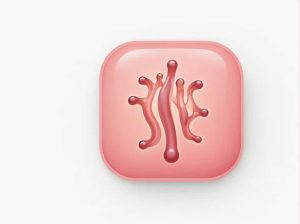The human body contains several protective membranes that help support and cushion internal organs. One of the most important is the peritoneum a specialized membrane that lines the abdominal cavity and covers most of the abdominal organs.
The peritoneum plays a crucial role in organ protection structural support and fluid balance within the abdomen. It also helps reduce friction between organs preventing damage from movement. In this topic we will explore the structure functions and importance of the peritoneum along with its role in medical conditions.
What Is the Peritoneum?
The peritoneum is a thin serous membrane that lines the inside of the abdominal cavity and wraps around many of the organs within it. This membrane consists of two layers:
- Parietal Peritoneum – Lines the inner surface of the abdominal and pelvic walls.
- Visceral Peritoneum – Covers the surfaces of the abdominal organs.
Between these two layers is the peritoneal cavity which contains a small amount of serous fluid. This fluid reduces friction and allows organs to move smoothly against each other.
Functions of the Peritoneum
The peritoneum is not just a simple lining; it serves several important functions in the body including:
1. Protection of Abdominal Organs
The peritoneum acts as a protective barrier shielding internal organs from infection and damage. It plays a vital role in the body’s immune response helping to prevent the spread of infections within the abdominal cavity.
2. Structural Support
This membrane helps keep organs in place by suspending them within the abdominal cavity. It forms ligaments and mesenteries that provide stability while still allowing some flexibility for movement.
3. Lubrication and Reduced Friction
The peritoneal cavity contains peritoneal fluid which lubricates the surfaces of abdominal organs. This prevents excessive friction and allows the intestines and other organs to slide against each other smoothly.
4. Transport of Nutrients and Waste
The peritoneum helps with fluid exchange and absorption allowing essential nutrients to reach the organs while also helping to remove waste products.
5. Immune Function
This membrane contains immune cells that help fight infections. If bacteria or harmful substances enter the peritoneal cavity the peritoneum can trigger an immune response to limit the spread of infection.
Types of Peritoneal Structures
The peritoneum forms several specialized structures that help support and connect organs:
1. Mesentery
The mesentery is a fold of the peritoneum that attaches the intestines to the abdominal wall. It contains blood vessels nerves and lymphatics that supply the intestines.
2. Omentum
The omentum is a fatty apron-like structure formed by the peritoneum. There are two types:
- Greater omentum – Covers the stomach and intestines providing protection and fat storage.
- Lesser omentum – Connects the stomach to the liver supporting blood vessels and bile ducts.
3. Peritoneal Ligaments
Several ligaments formed by the peritoneum help anchor organs in place. Examples include the falciform ligament (attaches the liver to the diaphragm) and the gastrosplenic ligament (connects the stomach to the spleen).
The Peritoneal Cavity and Its Importance
The peritoneal cavity is the space between the parietal and visceral peritoneum. It contains a small amount of peritoneal fluid which allows organs to move smoothly without friction.
In males the peritoneal cavity is a completely closed space. In females it communicates with the outside through the fallopian tubes uterus and vagina which can make women more susceptible to infections such as pelvic inflammatory disease (PID).
Common Disorders and Diseases of the Peritoneum
The peritoneum can be affected by various medical conditions including infections inflammation and cancer.
1. Peritonitis
Peritonitis is the inflammation of the peritoneum often caused by bacterial infection. It can occur due to:
- A ruptured appendix
- Perforated ulcers
- Diverticulitis
- Abdominal trauma
Symptoms of peritonitis include severe abdominal pain fever nausea and a swollen abdomen. It is a medical emergency that requires immediate treatment usually with antibiotics or surgery.
2. Ascites
Ascites is the accumulation of excess fluid in the peritoneal cavity. It is commonly associated with liver disease (cirrhosis) heart failure or cancer. This condition can cause abdominal swelling discomfort and difficulty breathing. Treatment often involves fluid drainage (paracentesis) and medication.
3. Peritoneal Cancer (Peritoneal Carcinomatosis)
Cancer can spread to the peritoneum from other organs such as the ovaries stomach or colon. This condition is called peritoneal carcinomatosis. Symptoms include abdominal pain bloating and weight loss. Treatment usually involves chemotherapy or surgery.
4. Peritoneal Dialysis
For patients with kidney failure the peritoneum can be used as a natural filter in a treatment called peritoneal dialysis. A special dialysis solution is introduced into the peritoneal cavity where it absorbs waste products from the blood before being drained out.
Differences Between the Peritoneum and Other Membranes
The human body has several other serous membranes that function similarly to the peritoneum. Here’s how they compare:
| Membrane | Location | Function |
|---|---|---|
| Peritoneum | Abdominal cavity | Protects and supports abdominal organs |
| Pleura | Lungs and chest cavity | Reduces friction in the lungs |
| Pericardium | Surrounds the heart | Protects and lubricates the heart |
Despite their differences all these membranes help to reduce friction and provide organ support.
The Evolutionary Importance of the Peritoneum
The peritoneum has evolved to help organisms adapt to movement and digestion. In primitive animals the digestive system lacked a protective membrane making organs vulnerable to damage. Over time the development of a peritoneal cavity allowed for greater flexibility improved organ function and better protection.
The peritoneum is an essential membrane that protects supports and lubricates the abdominal organs. It plays a crucial role in organ stability immune defense and fluid balance within the abdominal cavity.
Understanding the structure and function of the peritoneum helps us better appreciate its importance in health and disease. Whether preventing infection enabling peritoneal dialysis or supporting organs this membrane is a vital component of the human body.



